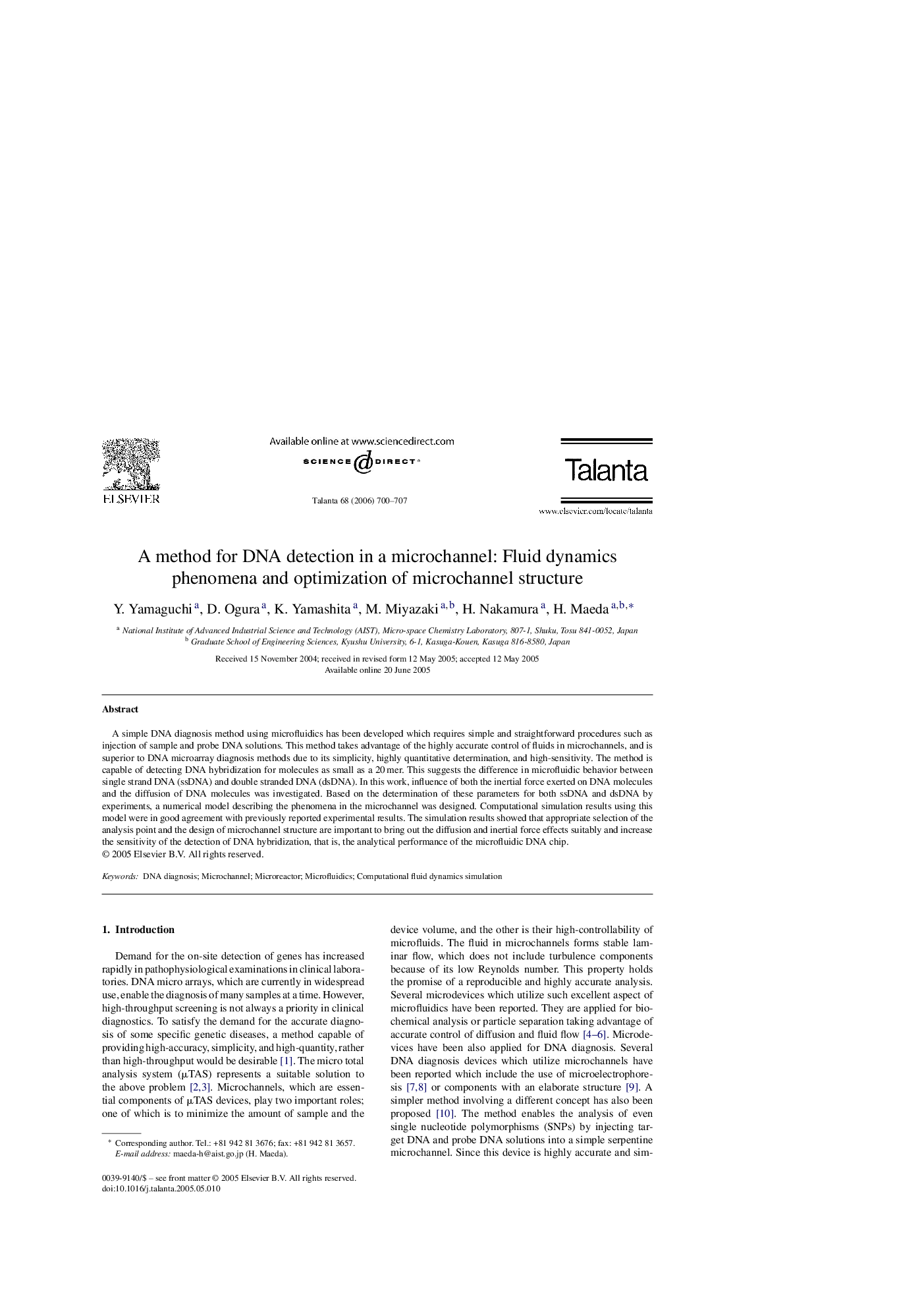| Article ID | Journal | Published Year | Pages | File Type |
|---|---|---|---|---|
| 1247385 | Talanta | 2006 | 8 Pages |
A simple DNA diagnosis method using microfluidics has been developed which requires simple and straightforward procedures such as injection of sample and probe DNA solutions. This method takes advantage of the highly accurate control of fluids in microchannels, and is superior to DNA microarray diagnosis methods due to its simplicity, highly quantitative determination, and high-sensitivity. The method is capable of detecting DNA hybridization for molecules as small as a 20 mer. This suggests the difference in microfluidic behavior between single strand DNA (ssDNA) and double stranded DNA (dsDNA). In this work, influence of both the inertial force exerted on DNA molecules and the diffusion of DNA molecules was investigated. Based on the determination of these parameters for both ssDNA and dsDNA by experiments, a numerical model describing the phenomena in the microchannel was designed. Computational simulation results using this model were in good agreement with previously reported experimental results. The simulation results showed that appropriate selection of the analysis point and the design of microchannel structure are important to bring out the diffusion and inertial force effects suitably and increase the sensitivity of the detection of DNA hybridization, that is, the analytical performance of the microfluidic DNA chip.
